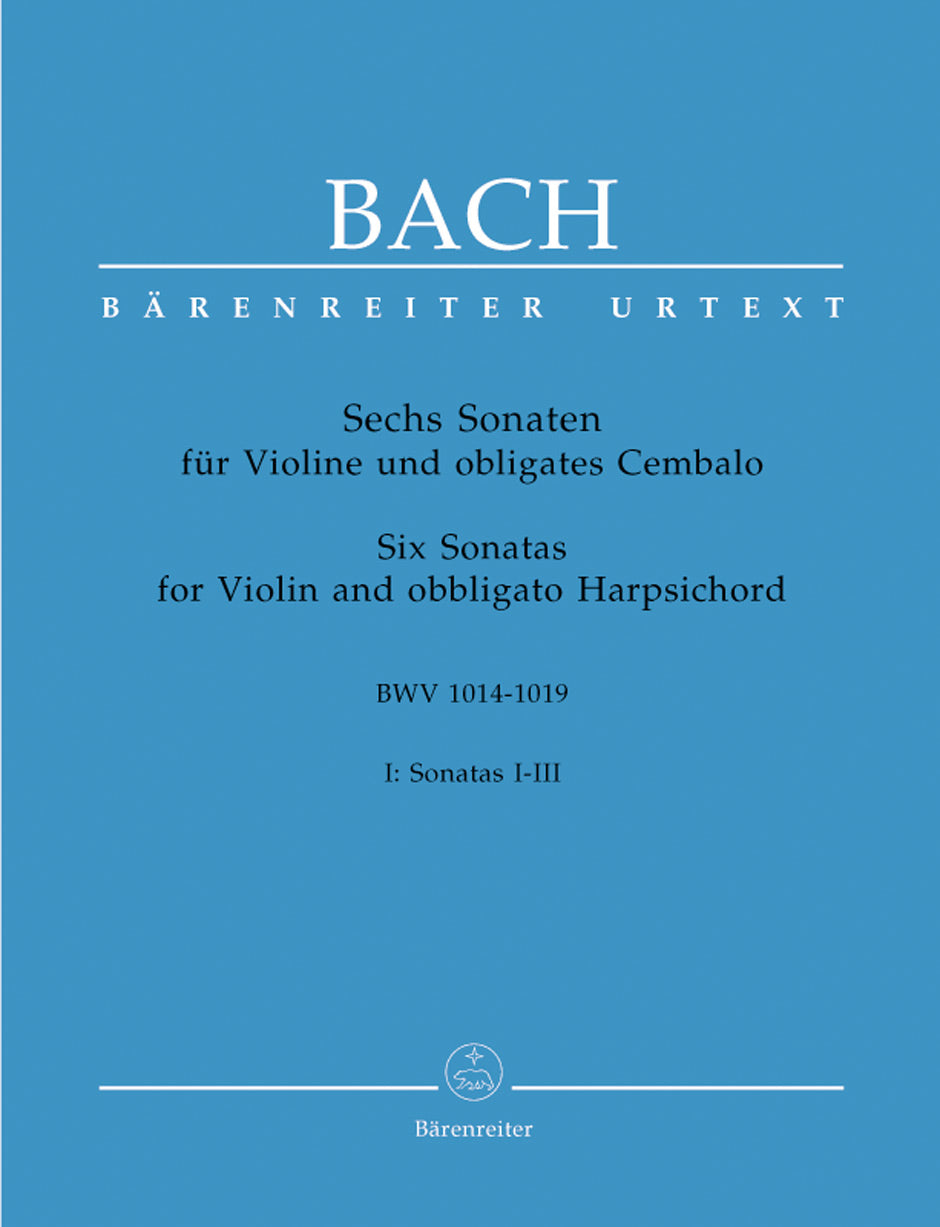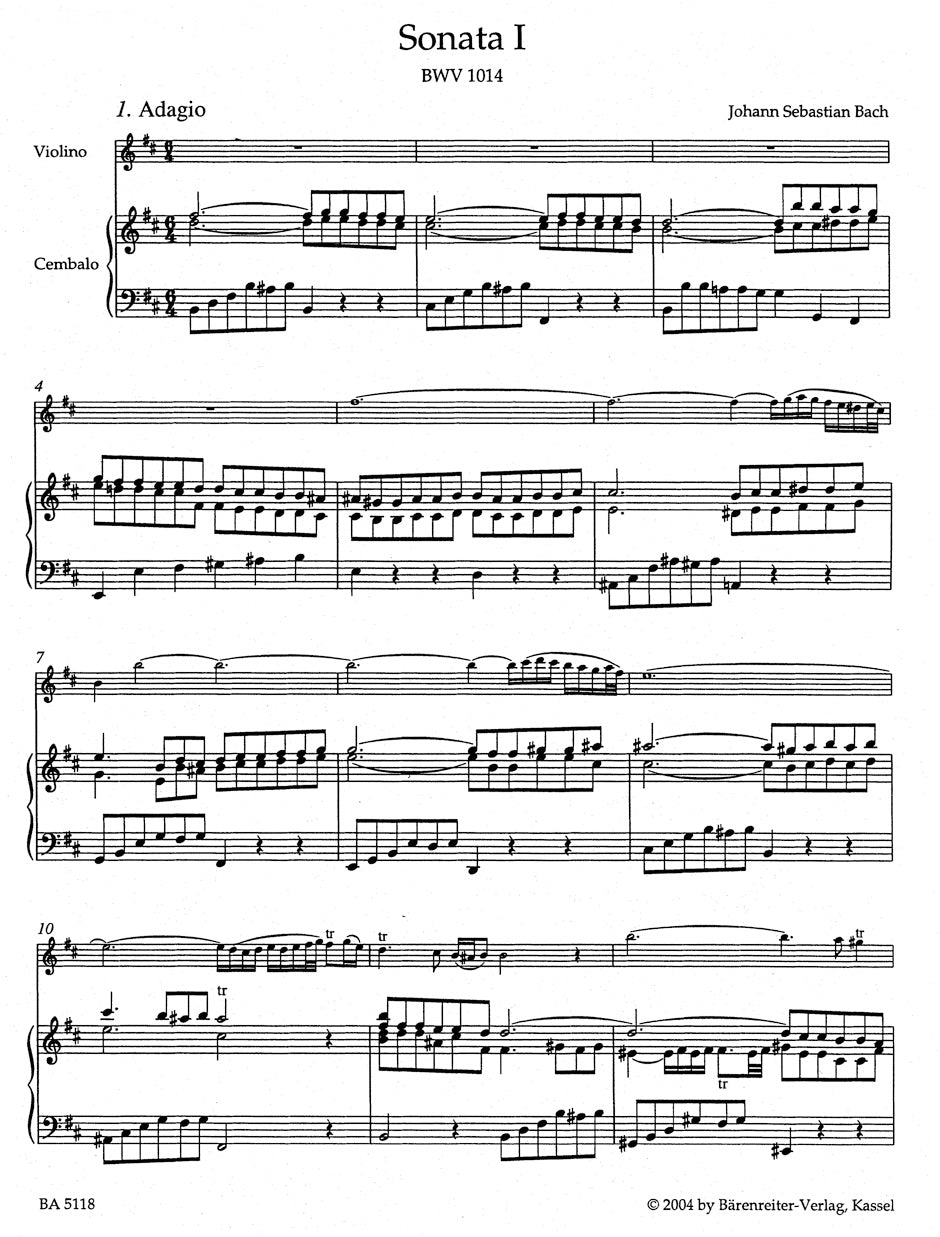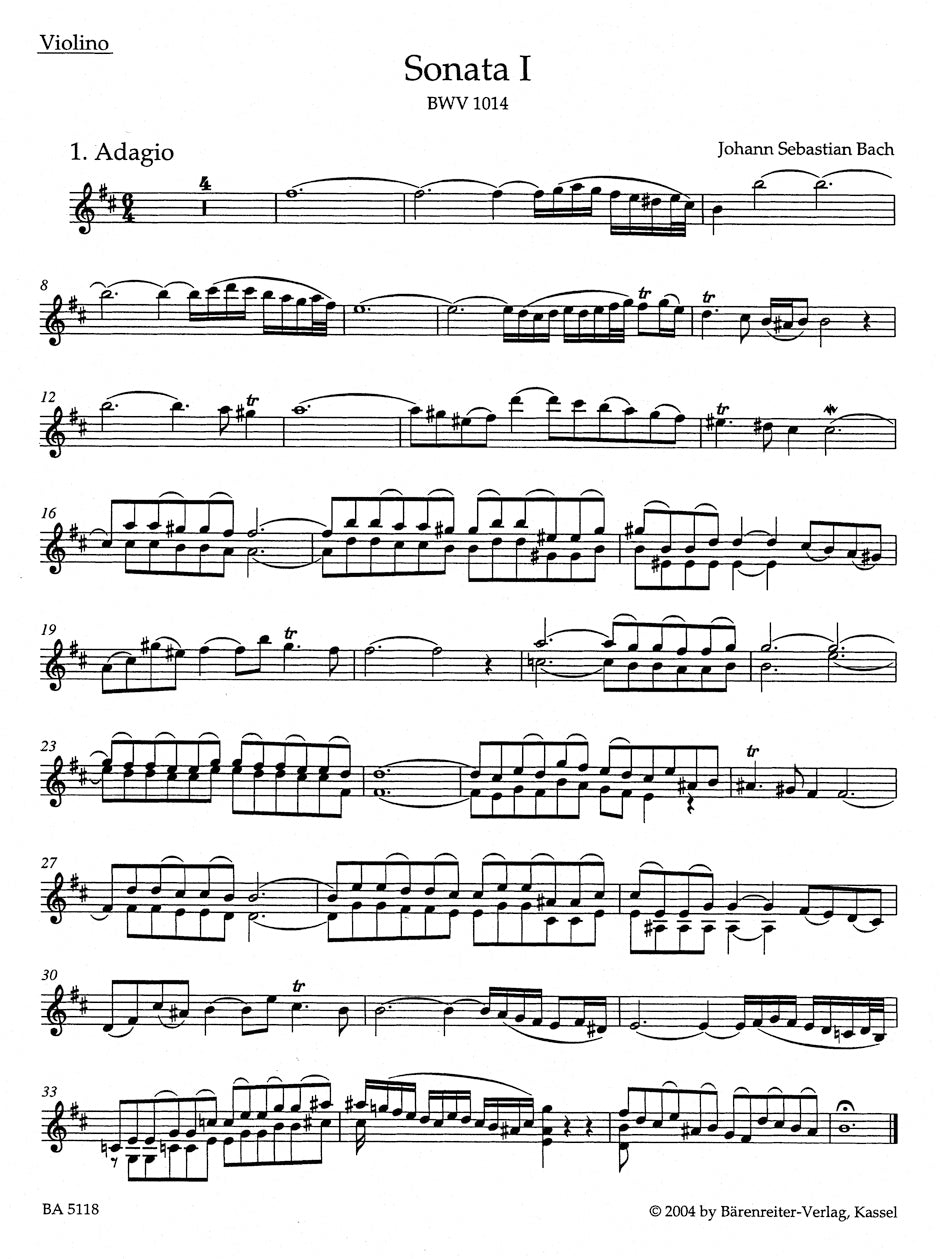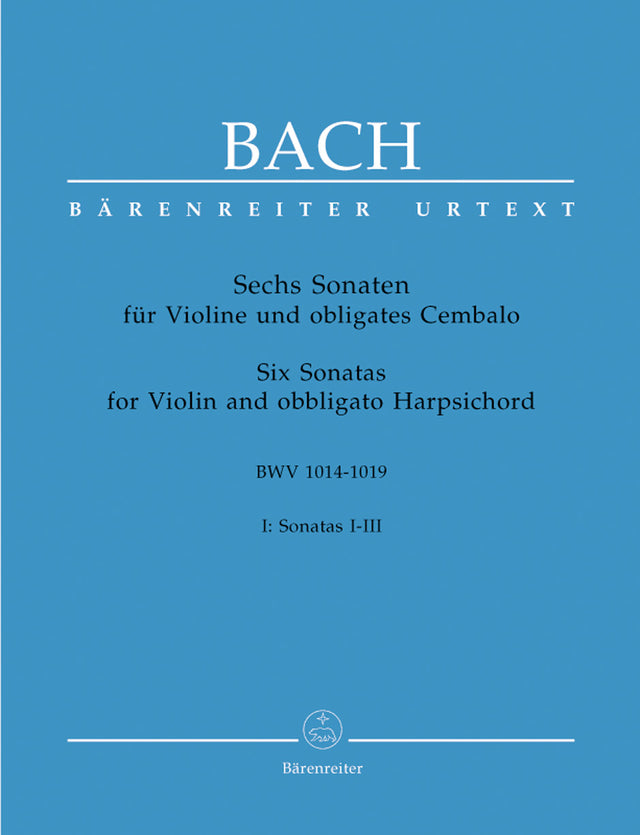Bach: Violin Sonatas Nos. 1-3, BWV 1014-1016
In stock and typically ships within 1 business day.
- Composer: Johann Sebastian Bach (1685-1750)
- Editors: Peter Wollny, Andrew Manze
- Instrumentation: Violin, Harpsichord
- ISMN:
- Size: 9.6 x 12.2 inches
- Pages: 130
- Urtext / Critical Edition
Description
Twenty-five years after Johann Sebastian Bach's death his son Carl Philipp Emanuel praised his father's trio sonatas, stating that "still today they sound great, even though they are older than fifty years." What a compliment about works of a genre that was notoriously fast to adapt to new styles and fashions in the eighteenth century! Still today, Bach's sonatas are considered masterpieces of Baroque counterpoint. Yet they might surprise anyone who expects them to feature the usual combination of two flutes or violins and figured bass. As in all of Bach's trio sonatas (except those for solo organ), there is only one melody instrument, as two of the three voices are played by the two hands of the obbligato harpsichord.
The sonatas for violin and obbligato harpsichord BWV 1014-1016 are a single sonata cycle with a remarkable expressive range: The melancholic, even lamenting sonorities of the first and fourth sonatas are contrasted by the serenity of the second or the virtuosity of the third sonata.
This revised edition is based on manuscript copies by several of Bach's pupils, as well as on the Urtext of the "New Bach Edition". The edition comprises a harpsichord score, a part for a bass string instrument as well as both an Urtext violin part and a second violin part, annotated with fingering and bowing along with notes on performance practice. A detailed Preface (Ger/Eng) and a Critical Commentary (Ger/Eng) are also included.
Works:
- Violin Sonata in B Minor, BWV 1014
- Violin Sonata in A Major, BWV 1015
- Violin Sonata in E Major, BWV 1016
Publishers use a lot of words to describe what they sell, and we know it can be confusing. We've tried to be as clear as possible to make sure you get exactly what you are looking for. Below are descriptions of the terms that we use to describe the various formats that music often comes in.
Choral Score
A score for vocalists that only contains the vocal lines. The instrumental parts are not there for reference. Generally, cheaper than a vocal score and requires multiple copies for purchase.
Facsimile
Reproductions of the original hand-written scores from the composer.
Full Score
For ensemble music, this indicates that the edition contains all parts on a single system (there are not separate parts for each player). In larger ensembles, this is for the conductor.
Hardcover
Hardbound. Generally either linen-covered or half-leather.
Orchestral Parts
Similar to a wind set, this is a collection of parts. In the case of strings, the numbers listed are the number of copies included, though generally these are available individually (often with minimum quantities required).
Paperback
When publishers offer multiple bindings (e.g. hardcover) or study scores, this is the "standard" version. If you're planning to play the music, this is probably what you want.
Performance / Playing Score
A score of the music containing all parts on one system, intended for players to share. There are not separate parts for each player.
Set of Parts
For ensemble music, this indicates that there are separate individual parts for each player.
Solo Part with Piano Reduction
For solo pieces with orchestra, this is a version that contains a piano reduction of the orchestra parts. For piano pieces, two copies are typically needed for performance.
Study Score
A small (think choral size) copy of the complete score meant for studying, and not playing. They make great add-ons when learning concertos and small chamber works.
Vocal Score
A score prepared for vocalists that includes the piano/organ part or a reduction of the instrumental parts.
Wind Set
For orchestral music, this is a collection of wind and percussion parts. The specific quantities of each instrument are notated.
With Audio
In addition to the printed music, the edition contains recordings of the pieces. This may be an included CD, or access to files on the internet.
With / Without Fingering (Markings)
Some publishers prepare two copies - a pure Urtext edition that includes no fingering (or bowing) suggestions and a lightly edited version that includes a minimal number of editorial markings.





